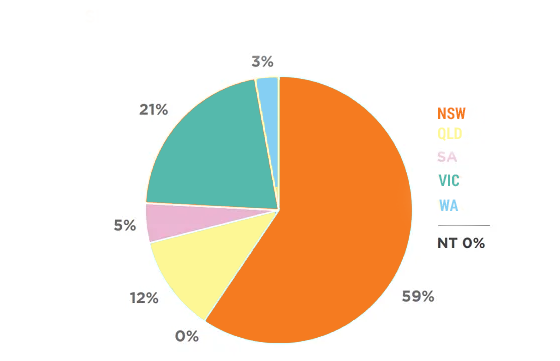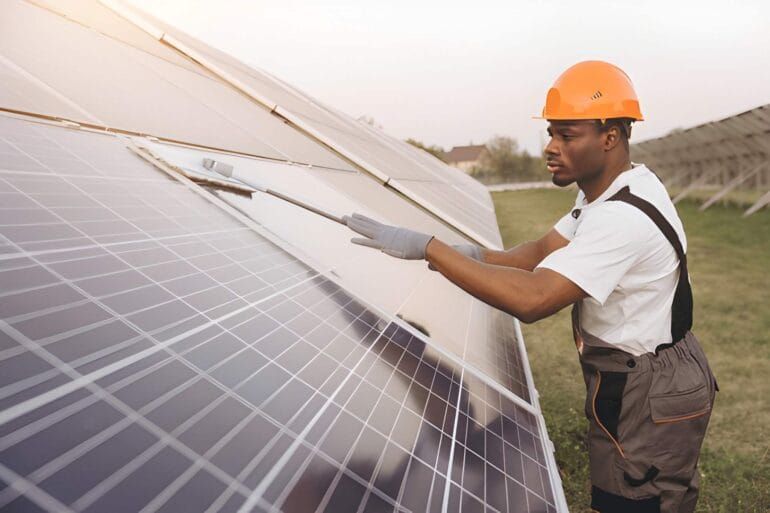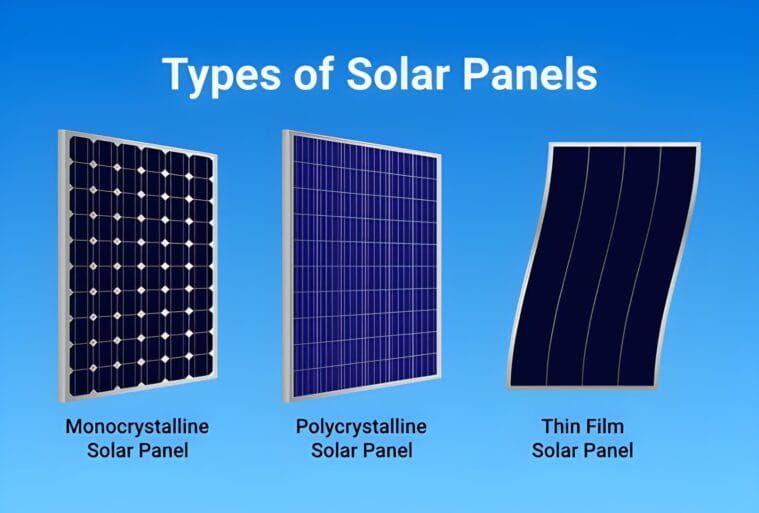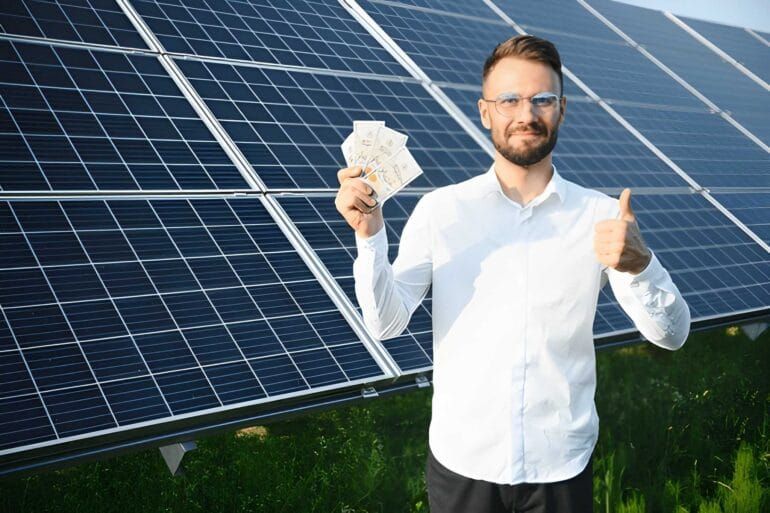As the cost of solar panels continues to drop and the state of Washington starts offering more incentives for residents to go solar, the Rooftop Solar Boom in WA is expected to skyrocket with the number of people installing rooftop solar panels set to increase significantly.
Going solar is a great way to save money on your energy bill, but it’s also good for the environment. Solar panels don’t release any emissions, so they don’t contribute to climate change. If you’re thinking about going solar, now is a great time to do it.
The cost of installing solar panels has dropped significantly in recent years, and the state of Washington offers a number of incentives for residents who go solar. So if you’re looking to save money and help the environment, solar is the way to go.
1. New Emergency Solar Management
The state of Washington is poised for a Rooftop Solar Boom in WA with installations expected to increase significantly in the coming years.
This is thanks to a new state law that requires utilities to credit customers for the power they generate from rooftop solar panels.
Previously, utilities in Washington were only required to pay customers the “avoided cost” of generating power, which is the difference between the cost of generating power from the grid and the cost of generating power from rooftop solar panels.
This often resulted in low payments to rooftop solar customers, as the cost of generating power from the grid is often much lower than the cost of generating power from rooftop solar panels.
Now, however, utilities in Washington will be required to credit customers for the full value of the power they generate from their rooftop solar panels. This is a huge victory for advocates of rooftop solar, as it will provide a much-needed financial incentive for people to install rooftop solar panels.
In addition to the new law, there are a number of other factors that are poised to drive the growth of rooftop solar in Washington.
First, the cost of rooftop solar panels has fallen significantly in recent years, making them much more affordable. Second, Washington’s electric rates are among the highest in the country, making the savings from rooftop solar even more significant.
Lastly, Washington is a sunny state, which means that there is plenty of sun available to generate power from rooftop solar panels. All of these factors together make it clear that Washington is poised for a boom in rooftop solar installations in the coming years.
2. The WA energy sector
In the next few years, Western Australia is set to see a Rooftop Solar Boom in WA with a significant increase in the number of houses and businesses installing rooftop solar panels.
This is thanks to a combination of factors, including the increasing cost-competitiveness of solar photovoltaic (PV) technology, the state’s high solar resource, and favorable state government policies.
WA currently has around 1.2 GW of installed rooftop solar PV capacity, and this is expected to grow to around 4 GW by 2023. This growth will be driven by both the residential and commercial/industrial sectors. The residential sector is currently the largest market for rooftop solar in WA, with around 700 MW of installed capacity.
This is expected to grow to around 2 GW over the next few years. There are a number of reasons for this growth. First, solar PV technology has become much more cost-competitive in recent years.
The cost of solar PV panels has fallen by around 80% since 2010, making them a much more attractive proposition for households. Second, WA has one of the best solar resources in the world.
This means that households and businesses in the state can generate large amounts of electricity from their rooftop solar panels. Finally, the state government has introduced a number of policies that are supportive of the growth of rooftop solar.
These include a feed-in tariff for excess electricity generated by solar PV systems, and a requirement for energy retailers to source a certain percentage of their electricity from renewable sources. All of these factors are set to drive strong growth in the WA rooftop solar market in the years ahead.
3. 191 MW of generation capacity of rooftop solars
In 2016, Washington state had 191 megawatts (MW) of installed rooftop solar photovoltaic (PV) capacity, ranking it seventh nationally in per-capita PV capacity and 13th among the states in total installed capacity, according to the Solar Energy Industries Association.

This ranking is based on the amount of power that PV panels can generate in one year and not their nameplate rating, which is the maximum power they could produce under ideal conditions.
The average annual power output of a rooftop PV system in Washington is about 72 percent of its nameplate capacity. Rooftop solar PV is a key component of Washington’s renewable energy portfolio. In 2016, rooftop solar PV provided about 0.4 percent of the state’s net electricity generation.
Solar PV is a clean, emissions-free source of electricity that has many benefits for Washington ratepayers and the environment. PV systems generate electricity during daytime hours when demand for electricity is typically highest.
This can help to lower peak demand and save money on energy costs. In addition, PV systems do not produce air pollution or water pollution. This is a significant benefit in Washington, where air quality is often affected by emissions from vehicles and industry.
The state’s solar resource is also excellent, with more than 200 days of sunshine per year on average. This means that Washington has the potential to generate a large amount of electricity from solar PV.
The state has set an ambitious goal of getting 15 percent of its electricity from renewable sources by 2020. Rooftop solar PV will play a key role in helping Washington reach this goal.
4. Solar is on the rise in WA
As the world increasingly turns to renewable energy sources to combat climate change, solar power is on the rise. And in Western Australia, we’re poised for a rooftop solar boom.
There are a number of reasons for this. First, WA has some of the best sunshine in the world, making it ideal for solar power. Second, the state government is investing heavily in solar, with a target of 50% renewable energy by 2030.
Finally, electricity prices in WA are among the highest in the country, making solar an attractive option for households and businesses. The result is that solar installations are growing rapidly in WA. In the last financial year, there was a 50% increase in the number of solar PV installations in the state.
And this growth is expected to continue, with some estimates suggesting that solar could provide 15% of WA’s electricity by 2025. There are a number of benefits of this growth in solar.
First, it will help to reduce our reliance on fossil fuels and combat climate change. Second, it will create jobs in the solar industry. And finally, it will help to lower electricity prices for everyone, as more solar power comes onto the grid. So if you’re thinking of going solar, now is the time. WA is poised for a rooftop solar boom, and there are plenty of benefits to be had.
5. Reliability and affordability of the power system.
As the cost of solar panels and batteries continues to fall, more and more households and businesses in WA are turning to rooftop solar to meet their energy needs, contributing to the Rooftop Solar Boom in WA.
In fact, a recent report from the Australian Energy Market Operator found that rooftop solar could provide up to 24% of Australia’s electricity by 2030. This increase in solar PV usage is good news for WA, as the state has some of the best solar resources in the country.
With more rooftop solar, we can expect to see a number of benefits, including: – Reduced demand on the grid: As more households and businesses generate their own electricity, they will rely less on the grid.
This will help to reduce demand on the system and may help to keep electricity prices down. – Reduced greenhouse gas emissions: Rooftop solar PV produces no emissions, so as more people install solar panels, we can expect to see a reduction in WA’s greenhouse gas emissions. – Improved energy security: Rooftop solar PV can provide a valuable source of backup power during times of peak demand or when the grid is down.
This can help to improve the security of WA’s electricity supply. With more households and businesses turning to rooftop solar, we can expect to see a number of benefits for WA’s electricity system.
6. Renewable energy and energy storage.
Get ready for a boom in rooftop solar in WA! In just a few years, the state has become a national leader in renewable energy, thanks to strong policies and regulations promoting solar power.
Rooftop solar PV is now the most common type of renewable energy in the state, with nearly one in four households having installed it. The state government has set an ambitious target of 33 percent renewable energy by 2020, and is on track to achieve this.
Rooftop solar will play a major role in meeting this target, with around 1.5 GW of capacity expected to be installed by 2020. This is enough to power nearly 400,000 homes. Solar PV is not only good for the environment, it also saves money for households and businesses.
With electricity prices set to rise in the coming years, solar PV will become increasingly attractive as a way to reduce energy bills. There are a number of programs and initiatives in place to encourage the uptake of solar PV.
The state government offers a rebate of up to $4,000 for households installing solar PV, and there are also a number of low-interest finance options available.
There are a number of companies offering solar PV installation services, and many of them are local WA businesses. So if you’re thinking of going solar, there’s never been a better time to do it!
7. The future of solar in WA
In recent years, Western Australia has been one of the world’s leading markets for rooftop solar PV, with the state’s households and businesses installing more PV per capita than any other jurisdiction.
This rooftop solar boom in WA is set to continue in the years ahead, with WA’s abundant sunshine and high electricity prices making solar an increasingly attractive option for households and businesses alike.
There are a number of factors that will drive the continued growth of solar PV in WA in the years ahead. Firstly, electricity prices in WA are among the highest in the world, making solar an increasingly attractive option for households and businesses looking to reduce their power bills.
Secondly, the state’s sunny climate means that solar PV systems in WA will generate more electricity than in other parts of the country. Finally, the WA Government has committed to a target of 50% renewable energy by 2030, which is likely to see a significant increase in solar PV installations in the state.
So what does the future hold for solar PV in WA? If current trends continue, it is likely that solar PV will become increasingly prevalent in WA over the coming years, with more households and businesses turning to solar to reduce their power bills.
It is also possible that the WA Government will introduce policies or incentives to further encourage the uptake of solar PV, such as feed-in tariffs or solar rebates. Whatever the future holds, one thing is certain – solar PV is here to stay in WA, and is likely to play an increasingly important role in the state’s electricity mix in the years ahead.
With the cost of rooftop solar falling and the state of Washington’s commitment to renewable energy, it’s no wonder that a solar boom is expected in the state.
Solar is a clean, renewable energy source that can help to reduce our dependence on fossil fuels. With more people installing rooftop solar, we can expect to see lower energy bills, cleaner air and water, and a healthier planet.







